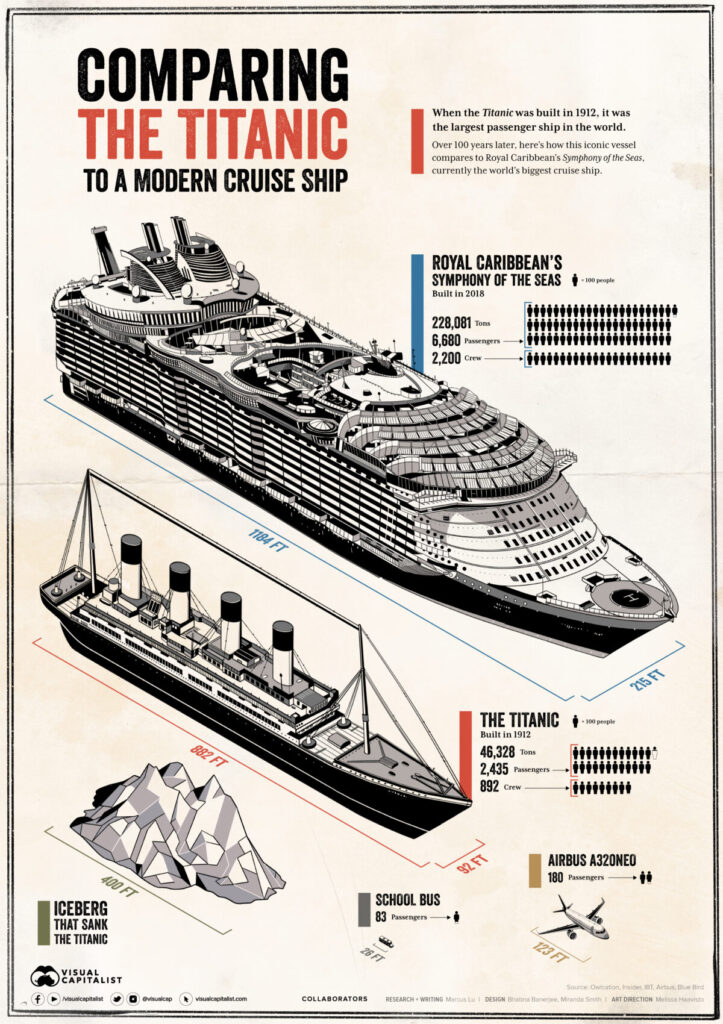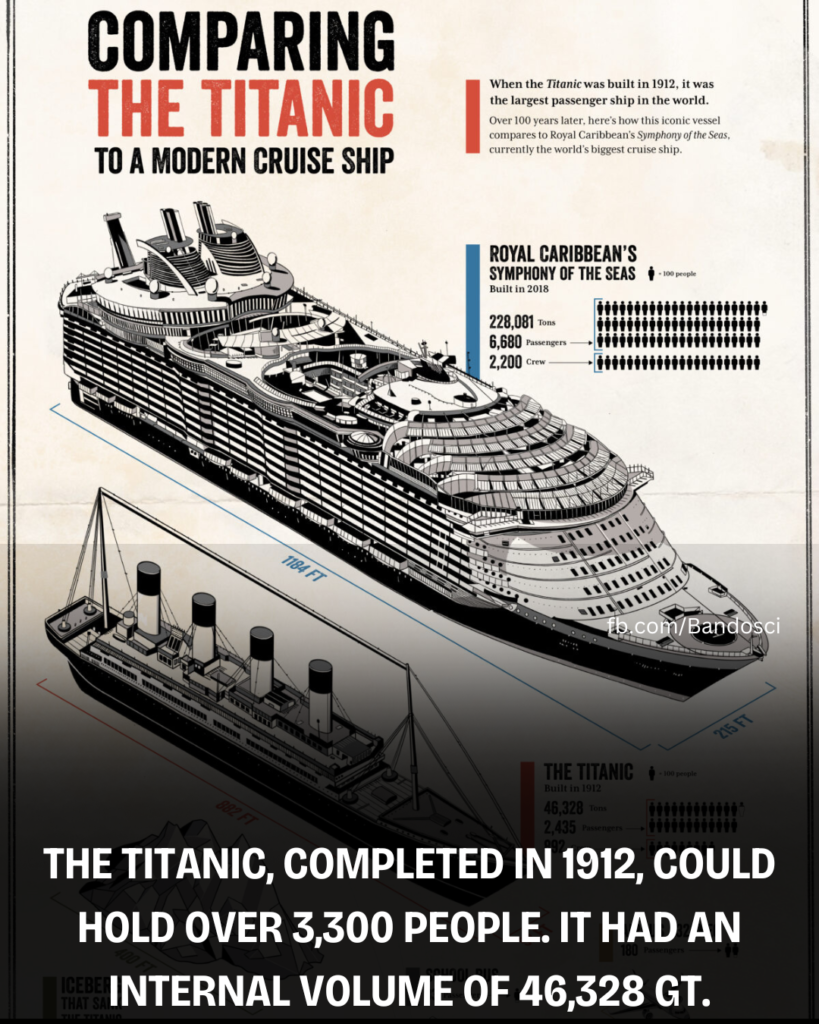Remembering the Tragedy of the Titanic
When the RMS Titanic was completed on April 2, 1912, it was hailed as a marvel of engineering and luxury. As the largest ship of its time, it could accommodate over 3,300 people, including passengers and crew, and offered an array of lavish amenities such as a swimming pool, a squash court, and opulent dining rooms.
Its grandeur attracted some of the world’s wealthiest and most prominent individuals, who eagerly boarded for its maiden voyage on April 10, 1912. Tragically, just five days later, the Titanic struck an iceberg and sank, resulting in the loss of more than 1,500 lives—a disaster that remains one of the most infamous maritime tragedies in history.
Over a century has passed since the Titanic’s sinking, and the world of passenger ships has undergone remarkable transformations.
To illustrate just how much cruise ships have evolved, we’ve compared the Titanic to Royal Caribbean’s Symphony of the Seas, currently the largest cruise ship in the world.

The Titanic’s Size in Perspective
To better understand the Titanic’s scale, let’s examine its dimensions alongside those of the Symphony of the Seas. The following table provides a side-by-side comparison of the two ships:
| Feature | Titanic (1912) | Symphony of the Seas (2018) |
|---|---|---|
| Length | 882 feet (269 meters) | 1,188 feet (362 meters) |
| Width (Beam) | 92 feet (28 meters) | 215 feet (66 meters) |
| Height | 175 feet (53 meters) | 238 feet (72.5 meters) |
| Gross Tonnage | 46,328 tons | 228,081 tons |
| Passenger Capacity | 2,435 (max) | 6,680 (max) |
| Crew Capacity | 892 | 2,200 |
| Total Occupancy | 3,327 | 8,880 |
As the table shows, the Symphony of the Seas dwarfs the Titanic in nearly every aspect. Modern cruise ships are not only significantly larger but also far more advanced in terms of technology, safety, and onboard amenities. While the Titanic was a symbol of luxury in its era, today’s cruise ships offer everything from water parks and zip lines to robotic bartenders and virtual reality experiences—a testament to how far maritime travel has come.
This comparison highlights not only the evolution of shipbuilding but also the advancements in safety regulations and passenger comfort over the past century. The Titanic’s tragic fate served as a catalyst for major improvements in maritime safety, ensuring that modern ships are equipped to handle emergencies far more effectively. While the Titanic remains an enduring symbol of human ambition and tragedy, its legacy lives on in the safer, more innovative cruise ships of today.


